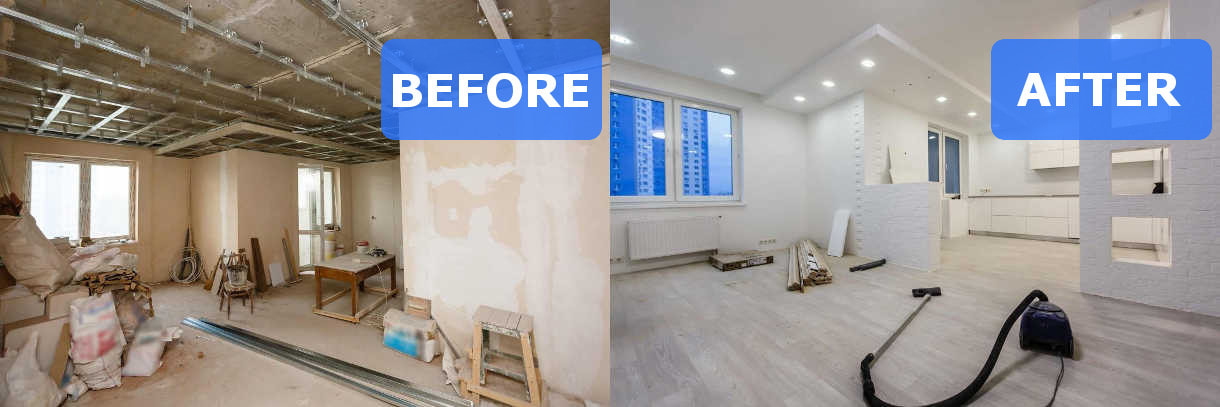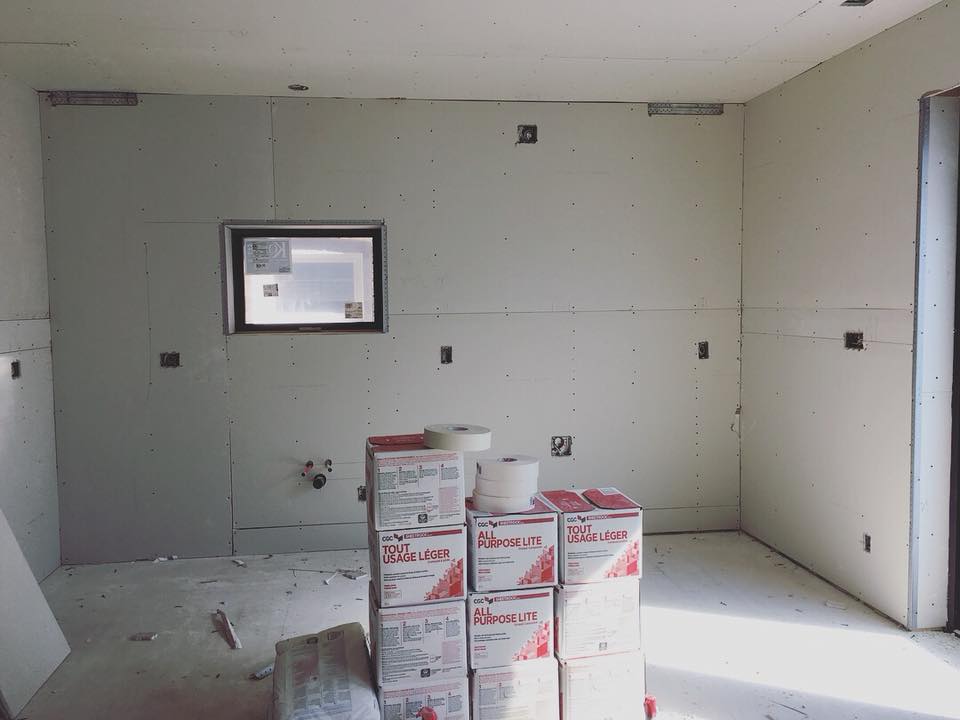Choosing the Right Drywall Contractors for Your Project
Wiki Article
The Ultimate Step-by-Step Overview to Drywall Installment: From Prep to Painting
Drywall installation is a crucial action in any kind of building or restoration task, and it needs mindful focus to information and specific implementation. In this comprehensive overview, we will stroll you via each step of the procedure, from the first preparation to the final painting. From gathering the required tools and products to determining and reducing the drywall panels, we will certainly offer you with concise and clear instructions to make certain a successful installment. But that's not all-- we will likewise cover the critical actions of safeguarding the panels, ending up the surface areas, and attaining a perfect paint job. So, whether you're a seasoned do it yourself fanatic or a beginner homeowner, this overview is your go-to source for achieving expert results.
Gather Necessary Tools and Products
To begin the drywall installation procedure, it is vital to collect all the required tools and materials in a professional fashion. Having the right devices and materials not only ensures a smooth and reliable installment yet likewise adds to the general high quality and longevity of the finished task.First and primary, you will certainly require a measuring tape to precisely gauge the measurements of the wall surfaces and ceilings. This will enable you to cut the drywall sheets to the appropriate size, minimizing waste. An energy blade with sharp blades is important for precise and tidy cuts (drywall repair). Furthermore, a T-square can help you attain square and straight cuts.
Next, you will screw or require a cordless drill gun to secure the drywall sheets to the studs. Make certain to have a sufficient variety of drywall screws handy. These screws must be long enough to pass through the drywall and safely secure it to the studs.
Other necessary devices consist of a drywall lift or a couple of assisting hands to aid with placing and holding the drywall sheets in position. A drywall T-square can be valuable for marking cutting lines, while a rasp or sanding block will allow you to smooth any type of rough sides.
Finally, gather all the essential safety and security tools, such as shatterproof glass, handwear covers, and a dirt mask, to secure on your own during the installment process.
Prepare the Workspace
Prior to starting the drywall installation procedure, it is essential to sufficiently prepare the work area to make certain a smooth and efficient setup. This action is important as it sets the foundation for the entire task, enabling the installation to proceed seamlessly.To begin, it is essential to clear the work location of any furniture, designs, or various other items that may obstruct the installment process. This includes eliminating wall surface danglings, covering furniture, and securing the floors with drop cloths or plastic sheets. In addition, make certain that the area is well-ventilated by opening up home windows or making use of fans to avoid the buildup of dirt and fumes.
Next, check the walls and ceilings for any kind of existing damages or abnormalities. Address any kind of problems such as cracks, holes, or irregular surfaces prior to waging the installment. This may include patching up openings, fining sand down harsh locations, or applying a skim coat to level the surface.
Last but not least, action and mark the design of the drywall sheets on the walls and ceilings. This will act as a guide during the installation process and help ensure precise placement of the panels (drywall contractors). Consider any kind of outlets, switches, or various other fixtures that might require special attention
Step and Cut the Drywall Panels
Accurate cuts and exact dimensions are important when collaborating with drywall panels during the setup procedure. Prior to reducing the drywall, it is vital to measure the dimensions of the area where the panels will certainly be set up. Use a measuring tape to establish the elevation and width of each section, and ensure to make up any type of electrical outlets or fixtures that may call for personalized cuts.Once the measurements are taken, transfer them onto the drywall panels noting or using a pencil tool. Ascertain the measurements to ensure accuracy prior to continuing with the reducing process. It is advised to make use of a T-square or straight edge to develop straight lines for reducing.

Remember to put on safety goggles and dirt masks when reducing drywall to secure yourself from debris (drywall repair). Additionally, it is advisable to have someone assist you in holding the panels during the reducing process to make certain stability and accuracy
Install and Secure the Drywall Panels
Appropriate installment and safe add-on of the drywall panels is critical for a effective and resilient coating. To begin, click this site thoroughly raise the drywall panel right into place, ensuring it lines up with the significant guidelines on the wall over at this website surface. Make use of a drywall lift or employ the assistance of another individual to hold the panel ready while you safeguard it. Beginning with one corner, insert drywall screws into the panel, driving them via the drywall and into the wall studs. Be sure to space the screws equally, roughly every 16 inches along the edges and every 12 inches in the facility. It is essential to prevent over-tightening the screws, as this can cause the drywall to split or damage. Repeat this process for each and every panel, guaranteeing they fit tightly together without any type of voids. As soon as all the panels are set up, inspect the surface for any kind of protruding blemishes or screws. Pierce or make use of a screwdriver to sink any kind of sticking out screws a little listed below the surface area. Use drywall joint compound to cover the joints between the panels and let it dry completely before continuing to the following action.
Complete and Paint the Drywall Surfaces
To accomplish a professional and refined coating, the next step after setting up and securing the drywall panels is review to meticulously finish and repaint the drywall surface areas. Completing the drywall involves a number of actions to guarantee a smooth and seamless appearance. Any noticeable seams or joints between the drywall panels have to be covered with joint substance and tape. This substance is related to the joints, smoothed out, and left to dry. Once dry, it is sanded down to develop a seamless surface. Next off, any kind of blemishes or irregular areas on the drywall are full of joint substance and sanded down up until smooth. After the drywall is properly completed, it is time to paint. Before painting, it is crucial to prime the drywall surface areas to make certain appropriate adhesion and a smooth finish. As soon as the guide is completely dry, the drywall can be painted utilizing a roller or brush, depending upon the wanted finish. Multiple coats may be necessary to attain the desired shade and insurance coverage. It is vital to permit each coat to dry prior to applying the following. Lastly, once the paint is dry, the drywall surface areas prepare to be enjoyed.Conclusion

From gathering the essential tools and materials to gauging and reducing the drywall panels, we will certainly give you with succinct and clear directions to make certain a successful installment.Exact dimensions and specific cuts are necessary when working with drywall panels throughout the setup process.Proper installation and safe attachment of the drywall panels is crucial for a successful and resilient finish. Beginning from one corner, insert drywall screws into the panel, driving them via the drywall and into the wall studs.To achieve a sleek and specialist coating, the next step after setting up and protecting the drywall panels is to very carefully end up and repaint the drywall surface areas.
Report this wiki page